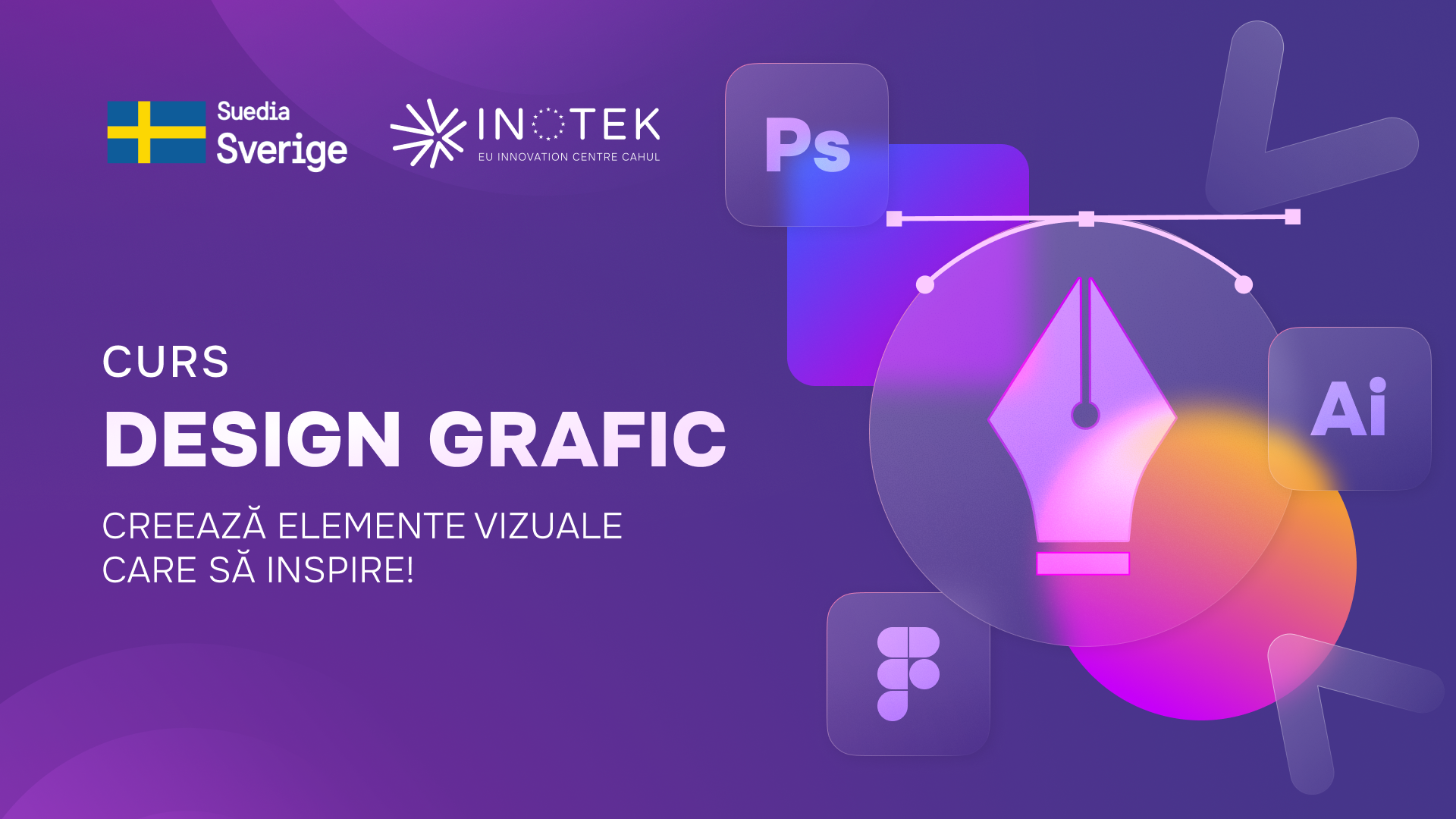Overview
If you are interested in digital art and want to express your creativity visually, the Graphic Design course will guide you through the entire process, from learning the basic principles to creating complex visual elements.
In the first part of the course, you will learn the fundamentals of design, including essential principles and basic techniques. You will study color theory and its impact on visual perception, as well as the compositional elements needed to harmonize graphic components.
Later, the course will cover aspects related to print preparation, focusing on using CMYK and RGB color settings to ensure accurate design reproduction.
At the end, you will create a practical project by developing the visual identity of a company.
Course duration: April- June 2025
Format: Offline
Cost: MDL 2999
Duration: 40 hours of direct contact, 10 hours of guided individual study
Schedule
Days: Monday, Wednesday
Time: 17:30 - 19:30
Course plan
- Definition and importance of graphic design
- Areas of application of graphic design
- Types of graphic design
- The role of the graphic designer in the industry
- What is graphic composition?
- Basic principles of composition
- Using positive and negative space in design
- Exploring compositional principles in design
- Color theory: primary, secondary, and tertiary colors
- The color wheel and the relationships between colors
- Psychological significance of colors and their impact on perception
- Using colors in design to convey messages and emotions
- Adobe Illustrator interface and workspace customization
- Basic tools: pen tool, selection tool, type tool
- Working in Adobe Illustrator: creating stickers
- Working in Adobe Illustrator: creating a simple illustration
- Adobe Photoshop interface and main functionalities
- Layers and masks: proper management and application
- Working in Adobe Photoshop: image editing
- Working in Adobe Photoshop: creating a GIF
- History and evolution of typography
- Classification of fonts: serif, sans-serif, script, decorative
- Text spacing and alignment: kerning, leading, and tracking
- Font hierarchy, font pairing, and their use in design
- Stages of the design process: brief, research, concept, execution
- Idea exploration and brainstorming
- Creating a mood board and defining the visual style
- Presenting the design to the client
- Basic principles of poster design; balancing text and images
- Correct selection of sizes and formats
- Creating attractive posters
- Using Adobe Photoshop and Illustrator for poster design
- What is a visual identity? Defining essential elements
- Characteristics of an effective logo: simplicity, memorability, relevance
- The most common types of logos used in design
- The process of creating a logo & visual identity
- Structuring an effective presentation
- Efficient use of graphic elements
- Optimizing visual appearance
- Creating an interactive experience
The course teacher
Eremia Anna
IT and Information Technology Teacher, Second Teaching Degree

 Level
Level  Start
Start  Term
Term  Days
Days  Program
Program  Present
Present  Location
Location  Language of instruction
Language of instruction 

